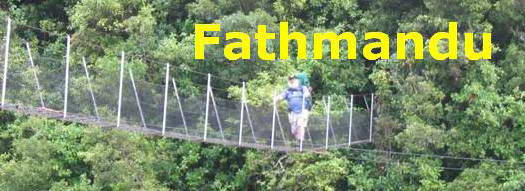
Many thanks for permission to use graphics from their software and toposheets |
 |
|
In the Steps of Jack LeighChapter 2: St Mary's Baypage 1 We start, as Jack did, at the corner of Ponsonby Rd, St Mary's Rd, Jervois Road and College Hill. The old Gluepot Hotel disappeared in the mid-1990s, the basic shell preserved but the interior converted into apartments and shops. A gesture in the direction of the old Three Lamps is almost obscured behind a traffic light and an upstart tree. Leigh tells us that the Gluepot lamps were put there in 1937, replacing an earlier set that stood on a pole in the centre of the road. Whether these are the same or a makeover like the rest of the Gluepot I'm not sure.
I recall a day in the early sixties in the upstairs bar at the Gluepot when Auckland was hosting the university Easter tournament. The Gluepot was the venue for the Drinking Horn speed drinking competition. I watched as the 8oz glass competition was won in, if I recall, 1.1 seconds and a 35oz jug was downed in what seemed the insanely short time of 7 seconds. (These figures are somewhat furred by the mists of nearly fifty years. I haven't had to use them until now.) I recall, later, in the mid-seventies, being part of a Polynesian Panther support group monitoring the activities of the newly formed "Task Force", many of whose activities seemed quite flagrantly racist as they sought to "clean up" the bars around Auckland. The Panthers, based in a house around the back of the Gluepot, recruited a goodly number of respectable if left-leaning pakeha to follow the Task Force and simply observe, so as later to be available if necessary as witnesses. It was an educational experience. Leigh tells us that "the Ponsonby post office (1912) is described as 'grossly ill-proportioned, indefensible as a piece of architecture yet oddly lovable,' by John Stacpoole in 'Victorian Auckland.' Its parentage is English baroque and Edwardian."
It is now the Ponsonby Belgian Beer cafe.
but up top, the lion and the unicorn prevail, and shame is still visited on whoever evil thinks thereof.
They've rather gone to town on the gilt.
A large restaurant sign, chained to the wall, protrudes onto the footpath. To get by a couple chatting next to it I am obliged to step out onto the road.
The name looks Maori, the cuisine is Asian and the couple speaking are using thick Scots accents and discussing soccer. Ponsonby.... Another Asian restaurant occupies the old Ponsonby Fire Station with its rising sun window where the old horse drawn appliance emerged.
Across the road, the Leys Institute surrounds are getting something of a makeover.
I'm not at all sure what Leys would have made of the pink paint job. As a university student in the late 50s I recall a much more austere front end - and interior for that matter.
Just along from the old fire station is one of the most intricate examples of colonial lace to be seen on the walk.
"Colonial lace" is the name given to the decorative corner pieces and borders that framed the verandahs and gables on early New Zealand houses.
The connection here with lace is obvious Even the verandah rails and the fence panels are intricately fretted. Today, power tools make work like this relatively straightforward - though still impressive. In Victorian times, cutting out patterns like this with a fine-bladed hand-held fretsaw must have been literally painstaking. I can feel my shoulders and jaw seizing up in sympathy as I write. Later, as villas made the gradual transition into bungalows, we note the lace becoming more simple, more austere. Here, the verandah railing has given way to a solid half-wall, and the lace to carefully shaped curves, though the sash windows, the stained glass and the basic structure are still those of the villa.
In fact, collecting examples of the various types of verandah framing can provide a focus for the walk all by itself. This from the corner of St Francis de Sales St, and this from up the hill a little towards Three Lamps:
This a more modern example, though still with the trademark sash windows. The wall would be a more recent designer-privacy addition.
Yet another example as we move down the street. Recent changes to building safety regulations make the verandah railing of interest. These require that where a deck or verandah is more than 1 metre above the ground, railings shall be vertical and no more than 100mm apart, and thus prevent small children from climbing over them or getting their head stuck between.
Across the way, a fine piece of seventies suburban rural stands alone, lacking only its complement of silver dollar eucalypts for aesthetic completeness.
|
|